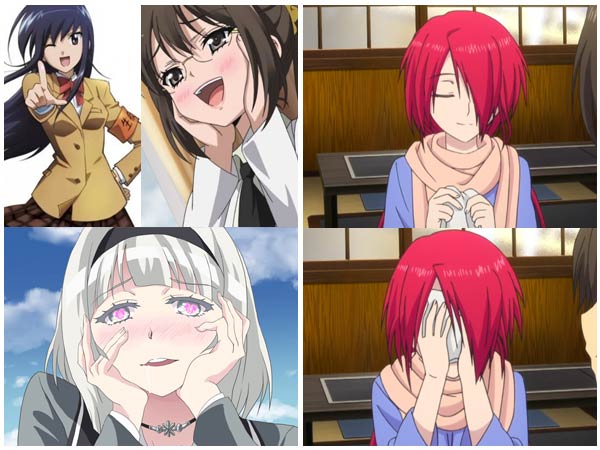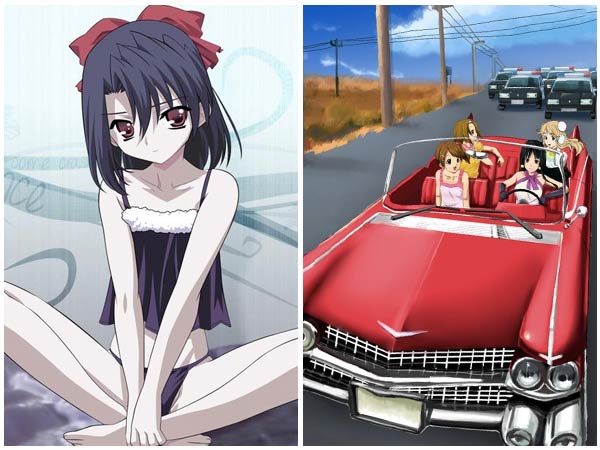There are many female character types commonly seen in anime, including the ojosama with that ridiculous rich-girl laugh, the bokuko who speaks with tomboy-ish male pronouns, the girl whose family runs a Shinto shrine thus requiring her to wear shrine maiden robes 24/7, and the plucky Osaka-ben speaking character who’s usually on the dumb side. Then there’s one of the most entertaining character types, the ecchi girl who can’t think of anything besides sex, which — in accordance with the 1951 Treaty of San Francisco — must always be paired with a dull-witted male main characters who’s unwilling or unable to take her up on her offers. There are many examples of this kind of character, including Ako and Riko from Kiss x Sis, the perverted science girl Rika Shiguma from Haganai and every female character in Seitokai Yakuindomo except Suzu. As with shimapan, popularized by an anime called Stellvia of the Universe back in 2002, or that piece of unkempt hair called ahoge, which became a fixture of anime characters after a 1996 Leaf eroge called Kizuato, it’s fun to trace the origins of the “perverted girl comic relief” meme. While sexually forward female characters have been around since the days of Monkey Punch’s Lupin the Third, it’s difficult to trace the beginning of the modern trope. After debating with J-List’s Facebook and Twitter followers, I believe the source would have to be the perverted fox-girl Chizuru from 2008’s Kanokon.
If you ever visit Japan, you’ll naturally want to be aware of what constitutes bad manners so you can avoid making a negative impression on the people you encounter here. A lot of customs are related to food or drink, for example it’s polite to use the back of your chopsticks (the part you haven’t been eating from) if you need to give a piece of food to someone else, and it’s impolite to pour your own drink when drinking with others — let someone else pour for you, and vice-versa. Some social taboos are related to Buddhism, and the reason why you should never stand chopsticks up in a bowl of rice is that this is reserved for funerals, done when offering a last bowl of rice to the deceased. (Surprisingly, some things we consider bad manners in the West, like slurping soup or noodles or reaching across someone’s plate to get something, are fine here.) One of my favorite customs in Japanese restaurants is when the waitress presents you with a hot towel when you sit down to eat, which is for cleaning your hands…though invariably people clean their faces even though this makes you look like an ojisan, or a middle-aged man with bad manners. One of the subtlest areas of manners in Japan is the idea of 遠慮 enryo, which means to hesitate or to refrain from doing something. After a group of Japanese has finished eating a meal such as pizza, there’ll always be one piece sitting uneaten, because it’s polite to leave it rather than be the person who took the last piece.
Some great news: we’ve posted even more awesome anime and other calendars, including the rare KyoAni calendars that are very hard to obtain. Because calendars always sell out so quickly, this year we’re doing an Early Bird Special sake, in which you get 20% off 2 or more calendars if you preorder before October 1st. This discount will disappear on that day, so make sure you preorder the calendars you want now!

















